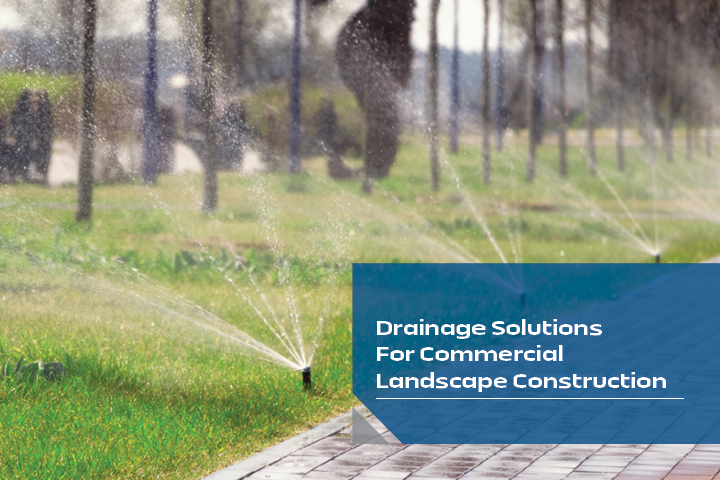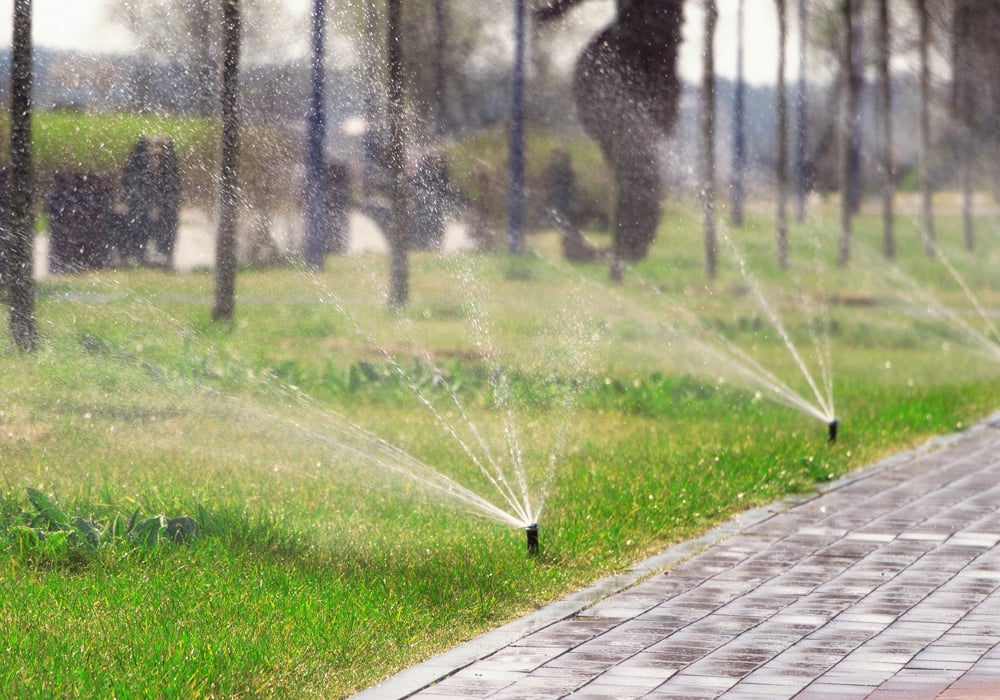
Great commercial landscaping consists of so much more than just creating an inviting space for your customers. Other considerations include environmental impact, municipal codes, worker and customer safety, and long-term maintenance.
One aspect of a commercial landscaping project that touches all of these is a high-quality drainage system. Here’s how and why.
Why Commercial Landscape Drainage is Important
The main function of commercial landscape drainage is to protect the landscaping. A great deal of time and money goes into commercial landscape design, and one brutal rainstorm can ruin it all if water isn’t effectively diverted from the area.
Without proper drainage, water runoff from rain or snow has nowhere to go, leading to soil erosion and possible weakening of pavement in the area, which can be detrimental to the longevity of vegetation.
A drainage system also protects the customers and the property itself, preventing water runoff from freezing and creating slipping hazards or reaching a commercial property’s foundation due to poor grading.
An effective drainage system also protects the environment by diverting runoff and the potentially harmful chemicals it may contain, such as automotive fluids, fertilizers, pesticides, and other common chemicals.
Drainage Solutions to Consider
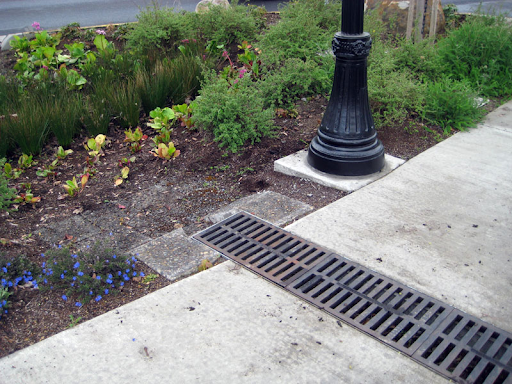
While there may be several drainage system options for your commercial landscaping project, not all are created equal, and not all will be effective for your particular application.
Here are some to consider:
Core Aeration
Core aeration is the starting point for effective stormwater management. If water is sitting on top of soil and grass, it may be a sign of compacted soil. Core aeration helps break up compacted soil, creating holes that make it easier for water to percolate into the soil.
It can help reduce standing water as well, though it should be thought of more as a seasonal maintenance drainage method and less as a full-blown solution.
Retention Ponds
Retention ponds help control stormwater by retaining and treating the contaminated stormwater runoff. The pond catches this water and removes pollutants through its own natural processes.
The water in these ponds comes from stormwater runoff collected in storm drains or catch basins, which is diverted through underground pipes to the pond. Proper design is critical to ensure the pond works correctly, and maintenance is necessary to ensure the pond remains stable.
For commercial landscape construction, retention ponds should ideally be in an area surrounded by natural vegetation. This will improve the pond's stability and also create a more aesthetically pleasing design. You may notice fluctuation in the pond’s water level, but this is normal. Think of it as a more natural water feature.
Slot Drain System
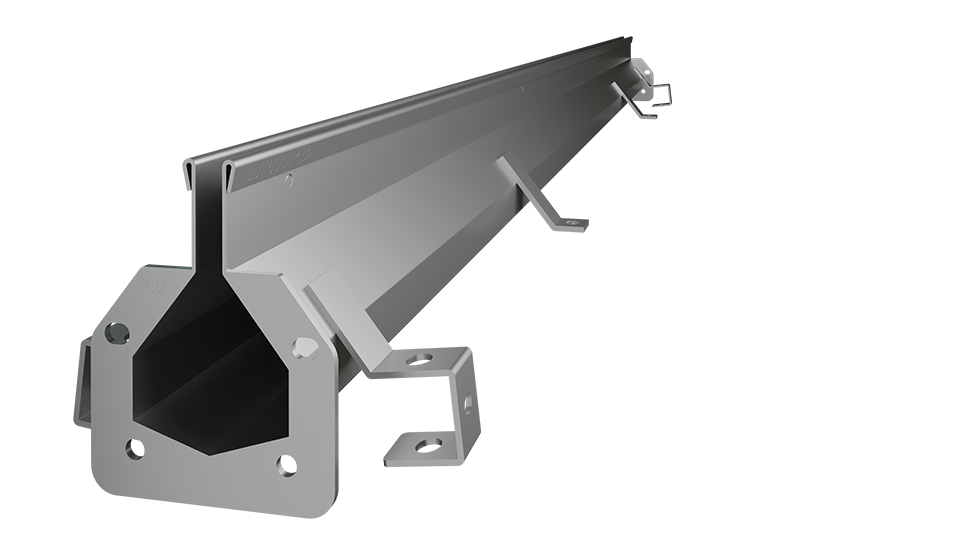
When considering drainage systems, the safest and most efficient solution for commercial landscape drainage is the Slot Drain system. Slot Drain is a linear, slotted trench drain designed with a slim channel opening that does not require a grate cover.
This modern design allows it to blend in seamlessly with the surrounding landscaping. The 7000 Series model is the perfect option for commercial landscaping purposes, crafted from high-quality and highly durable stainless steel. The system has a flow rate of anywhere from 11 gallons per minute, per linear foot (GPM) to 27 GPM, depending on the model and the size of the slot (0.5 inches, 1 inch, 1.25 inches).
Slot Drain is a safe and sanitary system that can withstand extreme temperatures and is resistant to chemical corrosion. It is also very easy to maintain with simple cleaning tools, and the slimmest slot opening is ADA-compliant, making it ideal for commercial properties.
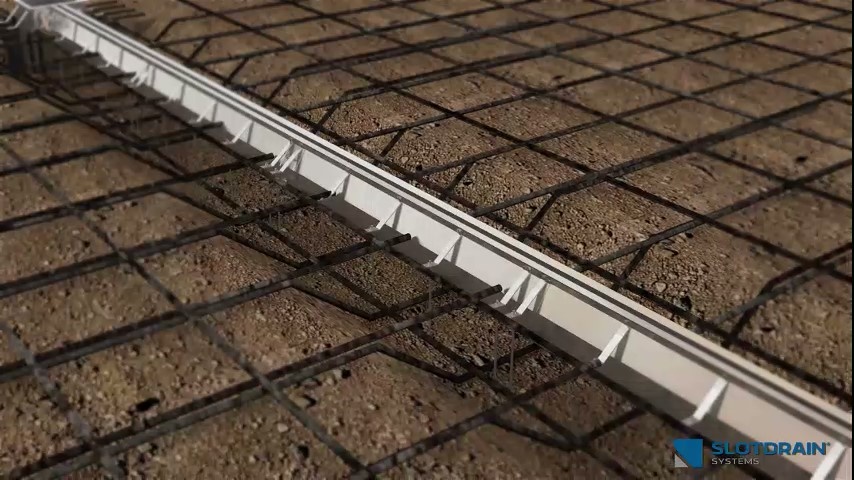
Permeable Pavement
Permeable pavement features a porous paved surface, like pervious concrete or porous asphalt, that sits on top of aggregate, gravel, or soil. It is a beneficial system since it eliminates water runoff and creates a cooler surface, which is ideal for warmer climates. It’s also a natural way to divert storm runoff quickly
Permeable pavement is a complex system and installing it requires a specialist who knows how to handle the materials, which can be expensive. The soil underneath needs to be taken into consideration, as denser soils can prevent proper drainage, rendering the permeable pavement useless.
Permeable pavement materials can also be less durable than traditional concrete or asphalt, so consider area traffic before deciding on this drainage method.
Choosing the Right Solution
Effective drainage is the key to not only protecting the look of your commercial landscaping, but protecting your financial investment in that landscaping as well. Consider your options, consider your preferences and motivations, and then make a savvy choice based on what will work best for all aspects.
If you have any questions, contact the drainage experts at Slot Drain today to learn more.

